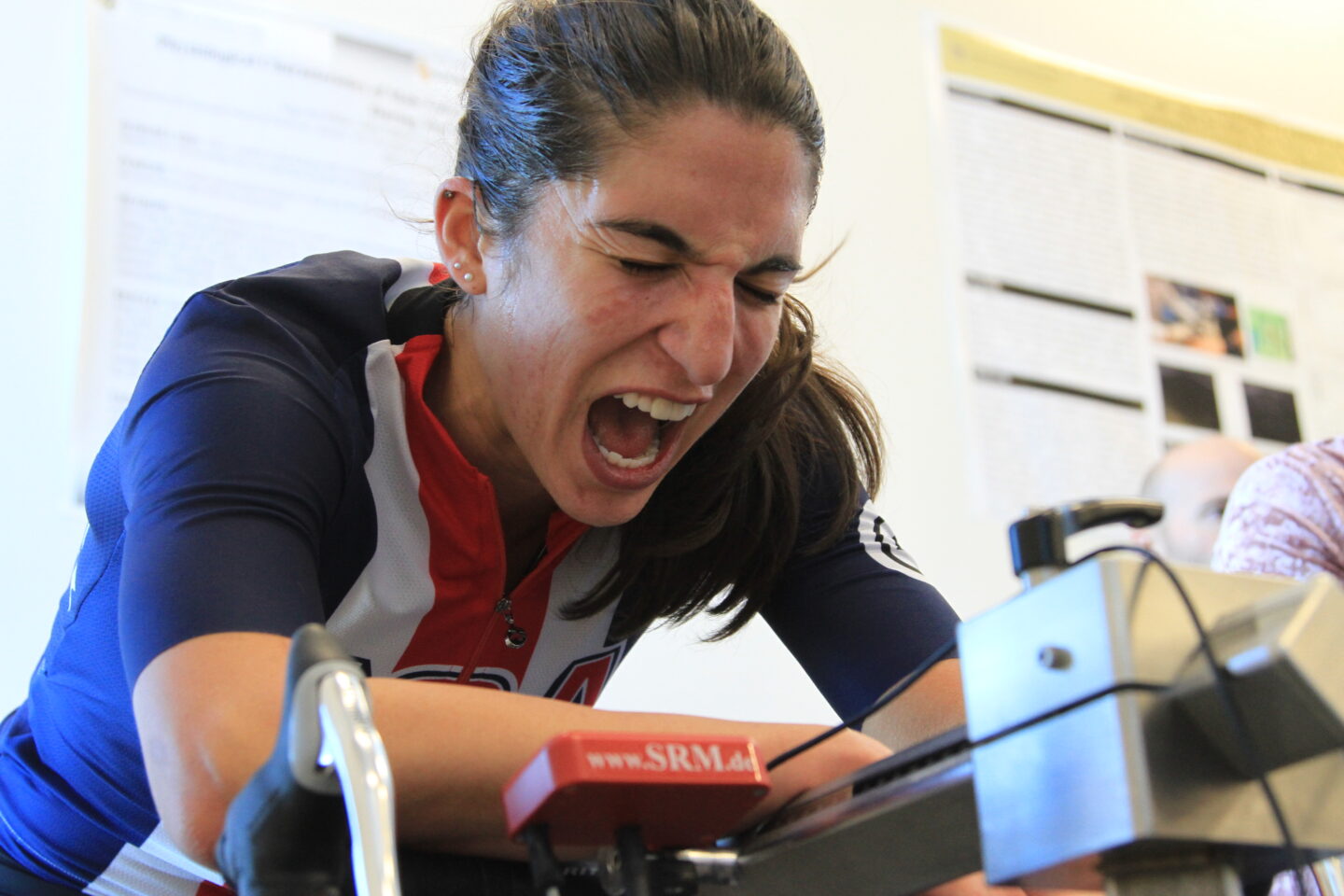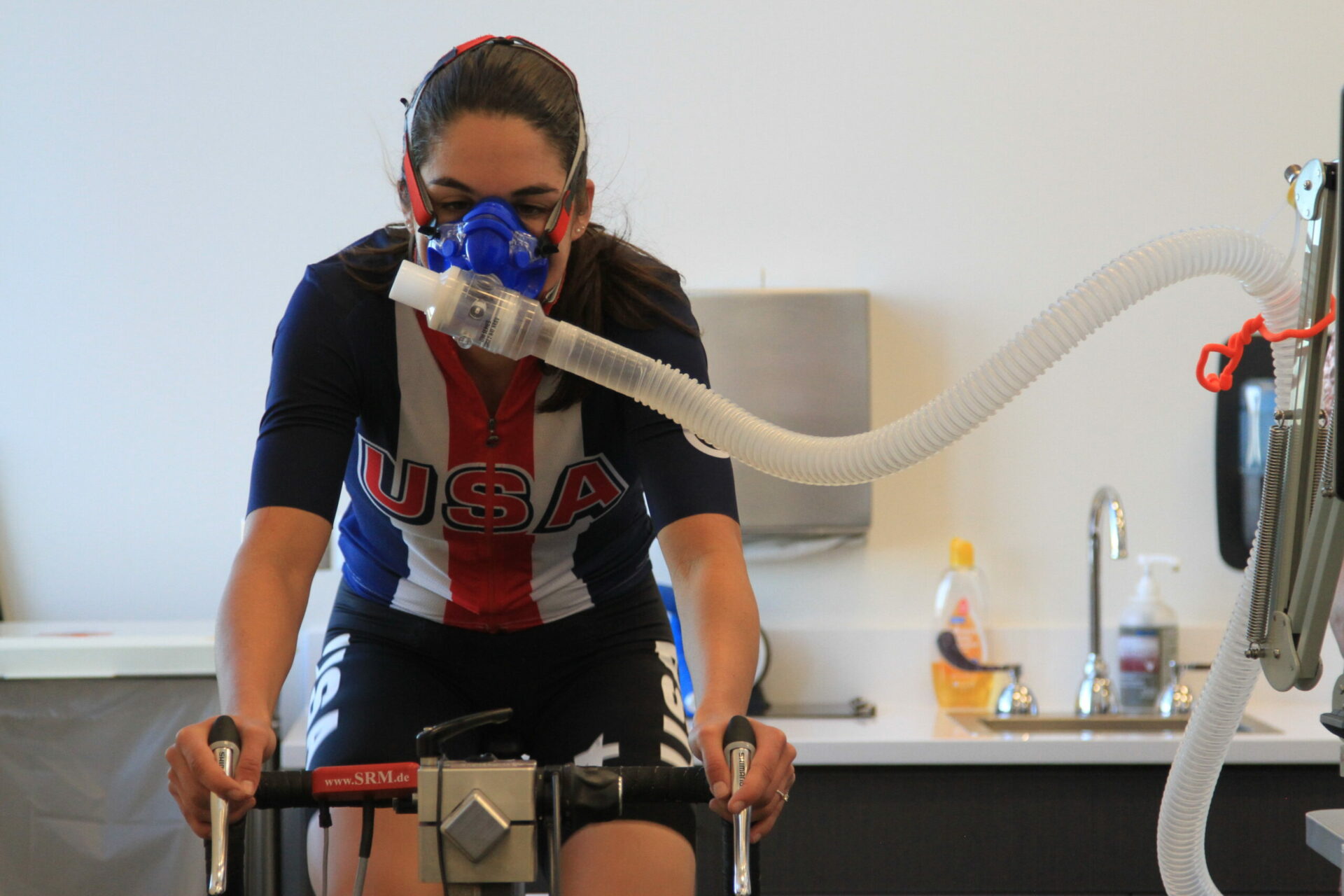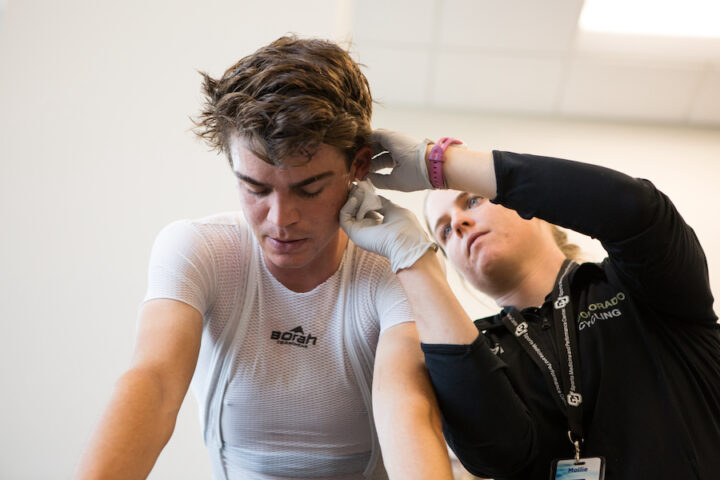Because physiological testing is such a critical component to analyzing an athlete’s engine, test day should be treated much like race day. Only if you put good data in will you get good data out.
Given this, should female athletes prepare any differently for these tests based on where they are in their menstrual cycle? Should women expect different outcomes for in-lab performance and exercise tests based on what phase of the cycle they’re in?
Science is inconclusive about whether the menstrual cycle has a positive or negative performance impact on a female athlete. However, fluctuating estrogen and progesterone levels clearly have diverse and complex effects on a woman’s physiology, including her cardiovascular, respiratory, metabolic, and neuromuscular systems.
Which begs the question: Should a female athlete prepare differently for in-lab performance and exercise tests, like lactate threshold and VO2max, based on where she is in her menstrual cycle? Would special accommodations and preparation help counteract certain effects to produce more accurate, consistent results?
With a lactate threshold test, for example, we use the lactate accumulation and curve to determine training zones. Would a female athlete’s lactate production vary across her menstrual cycle due to fluctuating hormone levels and their effect on substrate utilization? If so, then the lactate inflection point might change, and as a result, the training zones might change.
What happens in the lab?
At the Kaiser Sports Medicine lab where I work, we do not currently advise female athletes to prepare differently for these tests based on where they are in their menstrual cycle. What do other labs and technicians recommend?
Fast Talk Labs Head Coach Ryan Kohler was the former sports performance manager at the University of Colorado Sports Medicine and Performance Center, a world-class facility that tested hundreds of athletes in their physiology lab.
According to Coach Kohler, the lab did not provide special guidance to female athletes in their preparation for physiological or metabolic testing. However, the lab considered where in the menstrual cycle an athlete was before performing body composition testing, due to the fluctuating hormonal effect on fluid regulation.
“We had several athletes consistently come through the lab, but at that time it was not lab protocol to ask the female athletes where they were in their menstrual cycle,” Kohler said. “With the athletes who consistently visited the lab, there were no results that stood out as significantly different at different times of the month.”
What does the research say?
While research is scant, at least two scientific studies in females looked at the outcomes of performance and exercise test variables in the lab. In these studies, there were no special interventions or instructions given to help prepare the female participants in order to mitigate the potential effects of the menstrual cycle on the test results.
Dr. McNulty and colleagues reviewed studies that had tested specific markers of performance on females in the lab. (1)
Performance markers included total work done, time to completion, time to exhaustion, rate of force development, and indices of fatigue. Additionally, the authors reviewed studies that tested physiological variables of maximum oxygen uptake (VO2max) and VO2 peak. The study then measured these outcomes across six phases of the menstrual cycle: early follicular, late follicular, ovulation, early luteal, mid-luteal, and late luteal.
The authors concluded that nothing in the studies indicated the menstrual cycle significantly affected performance measurement outcomes. (They did emphasize that limited data and inconsistent research methods could have had an impact on the significance.) However, they noted that performance could be slightly reduced during the early follicular phase of the cycle as compared to other phases.
In conclusion, there were no significant changes in the performance markers measured, across six phases of the menstrual cycle, and no special interventions were taken to mitigate or control for fluctuating hormones and effects on substrate utilization.
Other research by Dr. Smekal and colleagues (2) had 19 eumenorrheic women (with a normal menstrual cycle) perform a cycle ergometer test, measuring common exercise test variables including power output, VO2, blood lactate, heart rate, and respiratory exchange ratio (RER).
Testing took place on day 9 (+/- 1 day) during the follicular phase; and day 25 (+/- 2 days) during the luteal phase. Diet was controlled and standardized the day before and morning of the test. Still, no special interventions were taken into consideration because of the menstrual cycle. The authors also controlled training, with no changes in training load occurring between tests.
The results of this study indicated that in comparing power output, VO2, blood lactate, heart rate, and RER, there were no significant differences between follicular and luteal phases of these variables at rest, at maximal load, selected thresholds, or any stage of the incremental tests.
This study did however indicate higher values for the ventilatory equivalents for oxygen (Ve/VO2), ventilatory equivalent for carbon dioxide (Ve/VCO2), and minute ventilation (Ve) at rest, at exhaustion, and at anaerobic threshold in the luteal phase.
Higher measurements of these markers generally suggest inefficient ventilation. This difference can most likely be attributed to higher progesterone levels during the luteal phase, which is known as a respiratory stimulant. However, and of most importance, this increase in ventilation did not affect the ventilatory threshold or oxygen cost of exercise.
These researchers concluded that there were no changes in performance driven by the menstrual cycle, and that it had no influence on lactate or ventilatory thresholds. Again, in this test, no special preparation or other measures were taken on behalf of the female testers.
Should menstrual cycle dictate when you test?
Based on current science, female athletes shouldn’t do anything different than they have done before performance, physiological, or metabolic testing in order to attain accurate, consistent results.
That said, I will begin to ask, “Where are you in your menstrual cycle?” before testing female athletes at the Kaiser Sports Medicine lab. While science is still inconclusive, I will use this information as an added consideration when analyzing test data.

Getting the most out of lab testing
The research suggests there is no need to prepare any differently for lab testing to accommodate for the menstrual cycle. So how should you prepare? Here are some general guidelines to get the most accurate results from your in-lab exercise test.
VO2 and lactate testing
Think of these tests as a hard interval session, and mentally and physically prepare for the test as you would any interval session; that is, get ready to dig deep and give a maximum effort.
As with any athletic situation, it is valuable to know what to expect. Reducing any lack of familiarity with the test protocol will help to reduce stress and anxiety.
Testing protocols can vary based on the lab and the athlete. Typically, the VO2 tests are short, lasting 8-12 minutes. The intensity progresses rapidly, in one-minute stages.
The lactate threshold test has approximately six stages of increasing intensity, with each stage lasting 4-5 minutes.
Come to the test well rested; prime yourself as you would for a race or challenging workout. Hydrate and fuel accordingly, ideally taking in fuels 90 to 120 minutes prior to testing. During the test it is helpful to mentally put yourself in a race or event situation, to help motivate and fuel your effort.
Resting metabolic rate (RMR) test
Ideally, schedule this test in the morning. Also, it is best to fast overnight and to have kept activity to a minimum. If you need to schedule it later in the day, fast for a minimum of four hours.
Upon arriving at the test facility, take 15-20 minutes to relax and sit quietly. Avoid intense exercise and heavy lifting 24 hours prior to testing. As with the VO2 and lactate threshold tests, try to log some good sleep the night before.
This testing protocol is simple and low stress. All you need to do is lie supine on a massage or treatment table, with a canopy over your head, and breath normally. Trying not to fall asleep is likely the hardest aspect of this test.
Metabolic efficiency assessment
Preparation for this assessment is similar to that with RMR: no intense exercise or heavy lifting 24 hours prior to testing. It is not, however, critical to have the test scheduled in the morning.
While some labs suggest a minimum of a four-hour fast prior to testing, others suggest fueling 90-120 minutes beforehand, similarly to how you would for an interval session or event, in order to attain your realistic metabolism.
This assessment starts at a relatively low intensity and gradually increases to a moderate intensity. The stages in this assessment are typically four minutes, and the duration of the test is based on the individual’s metabolism and can range from 30-45 minutes.
References
- McNulty, K., Elliott-Sale, K., Dolan, E., Swinton, P., Ansdell, P., Goodall, S., Thomas, K., & Hicks, K. (2020). The effects of menstrual cycle phase on exercise performance in eumenorrheic women: a systematic review and meta-analysis. Sports Medicine, 50:1813-1827. https://link.springer.com/article/10.1007/s40279-020-01319-3
- Smekal, G., Von Duvillard, S., Frigo, P., Tegelhofer, T., Pokan, R., Hofman, P., Tschan, H., Baron, R., Wonisch, M., Renezeder, K., & Bachl, N. (2007). Menstrual cycle: no effect on exercise cardiorespiratory variables or blood lactate concentration. Medicine & Science in Sports & Exercise, 39(7):1098-106. DOI: 10.1249/mss.0b013e31805371e7. https://www.researchgate.net/publication/6240318_Menstrual_Cycle_No_Effect_on_Exercise_Cardiorespiratory_Variables_or_Blood_Lactate_Concentration




